After decades out of the limelight, Portugal has stepped into the spotlight as one of Europe’s hottest destinations. To help you plan your trip, I’ve chosen 28 of my favourite things to do in Portugal to inspire your travels.
Nestling between Spain and the Atlantic Ocean, Portugal combines a rich history with gorgeous modernity, from the ancient streets of Lisbon dating back to the Middle Ages to the coastal charms of the Algarve.
No matter which time of year you choose to visit, you can expect to be welcomed by plenty of sun, sea, and mild temperatures during the “winter” months, and hot balmy summers with a cooling breeze whipping off the Atlantic in the summer.
Short on time? Don’t miss my step by step guide for the perfect 7 days in Portugal.
Best Things to do in Portugal
Delve into History in Belém, Lisbon
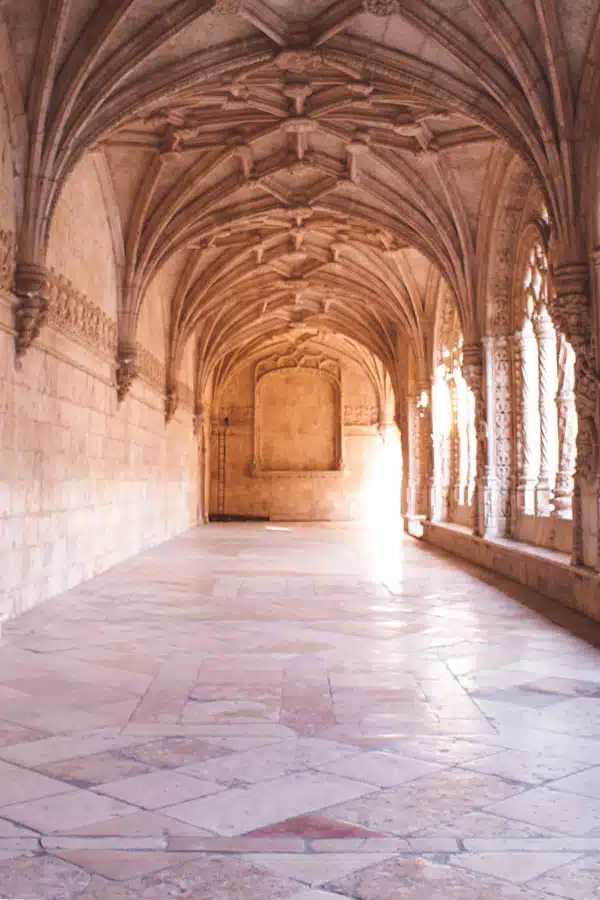
Sitting on the outskirts of Lisbon, Belem is home to three of the city’s most famous historical sites: The Monument to the Discoveries, the Jeronimos Monastery and the Torre de Belem.

If you are spending some time in Lisbon, a day in Belem should be at the top of your list – in fact, it’s worth a trip alone.
Take your time to explore the striking architecture of all three sights: from the unbelievable scale and detail of the monastery, to the intricately carved figures on the monument – a trip to Belem is like stepping back in time.
Read Next
Go Wine and Port Tasting in the Douro Valley
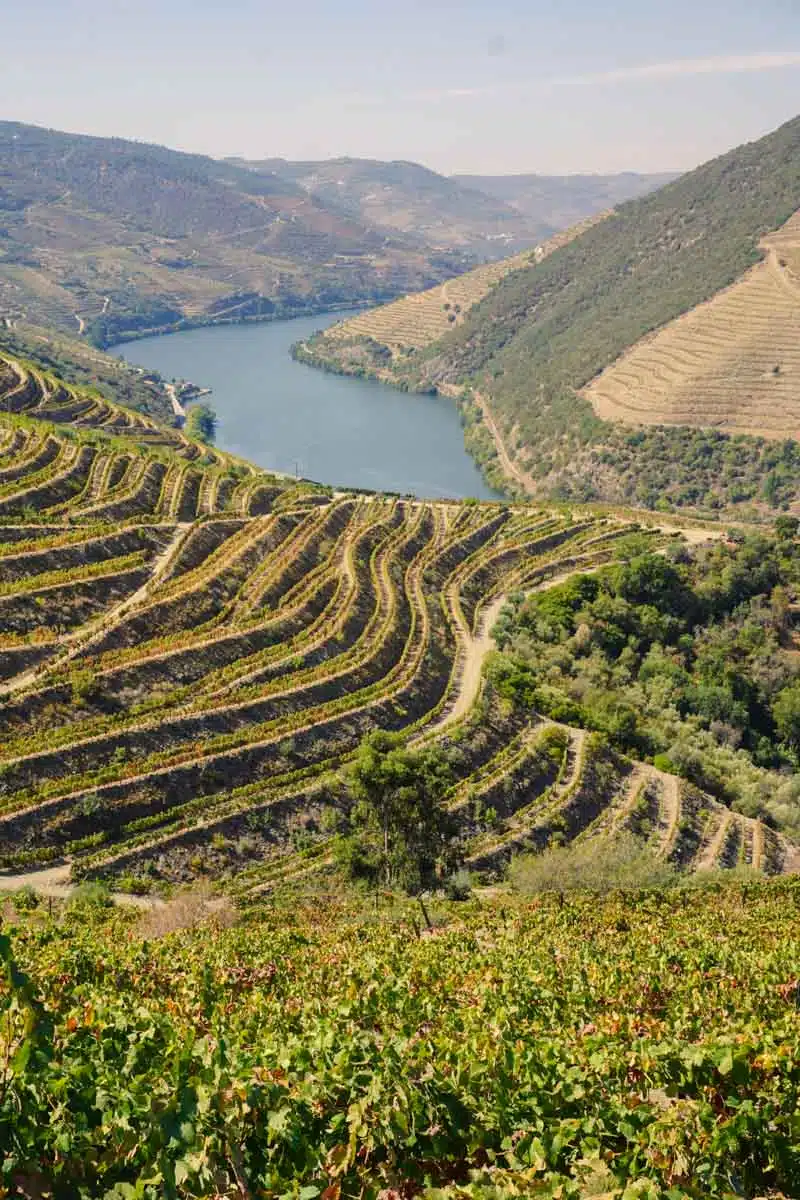
Portugal is really good at making tasty tipples – hands up if you’ve heard of that well-known drink called… Port. While the Portuguese are good at making all kinds of alcoholic treats, you need to go port and wine tasting in the Douro Valley during your time in the country.
The Douro’s beautifully terraced landscapes are one of the most famous sights in Portugal.
Add to this a collection of world-famous Port houses (Graham’s, Taylors, Sandemans to name a few) and vineyards making world-class wines and you’ll start to understand why you really shouldn’t miss this on your trip.
Read Next
Escape to Gorgeous Sintra
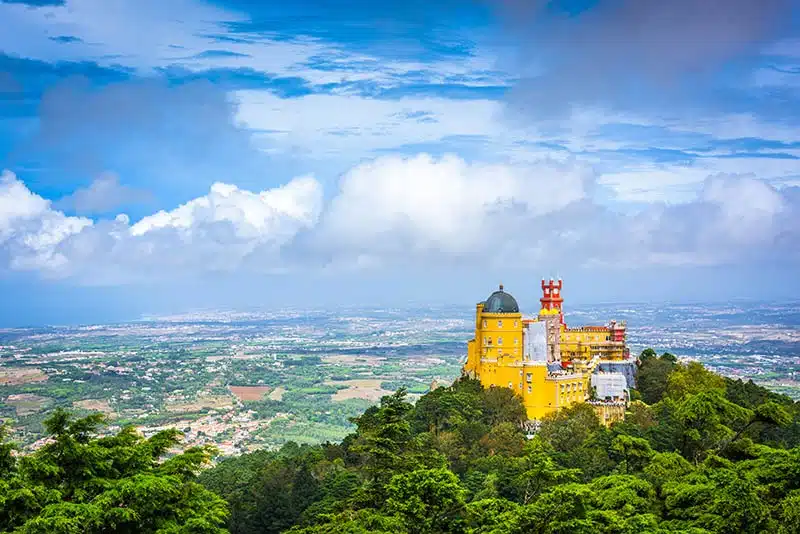
UNESCO-heritage Sintra is a fairy-tale amalgamation of colourful architecture, castles, convents and palaces all in a stunning location in the foothills of the Serra Mountains. A short hop away from Lisbon, the town is a popular day trip from the capital and deservedly so.
Make like the Portuguese aristocracy of days gone by and spend your days in the lush, shady gardens, occasionally dipping into a palace or two for variety’s sake.
While a day trip to Sintra is a great use of your time, it’s even better if you can stay the night – exploring the town once all the tour buses have gone is a much more peaceful experience.
Explore the Beautiful Benagil Sea Cave
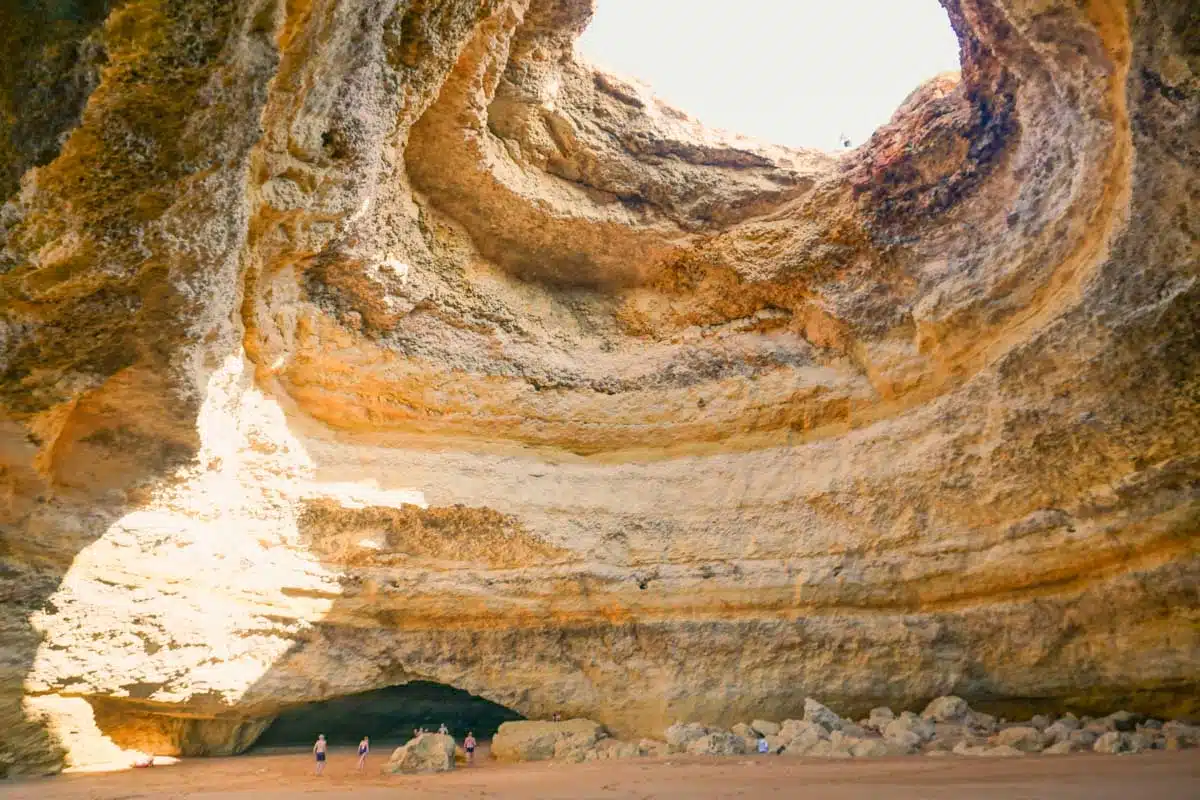
The retired expats and locals that live in the Algarve have kept pretty schtum about how beautiful it actually is to date, but now it looks like the secret’s out of the bag.
Of all the natural attractions on the rugged coast of the Algarve, the Benagil sea cave gets our vote for being the most spectacular. Swim or kayak round from the shore into one of the cave’s natural openings then look up at the huge domed ceiling leading up to an almost perfectly circular spot of blue sky.
What’s better? There’s a beach of perfectly soft fine sand for you to relax on before heading back to the real world.
Soak up the Sun on Praia do Camilo
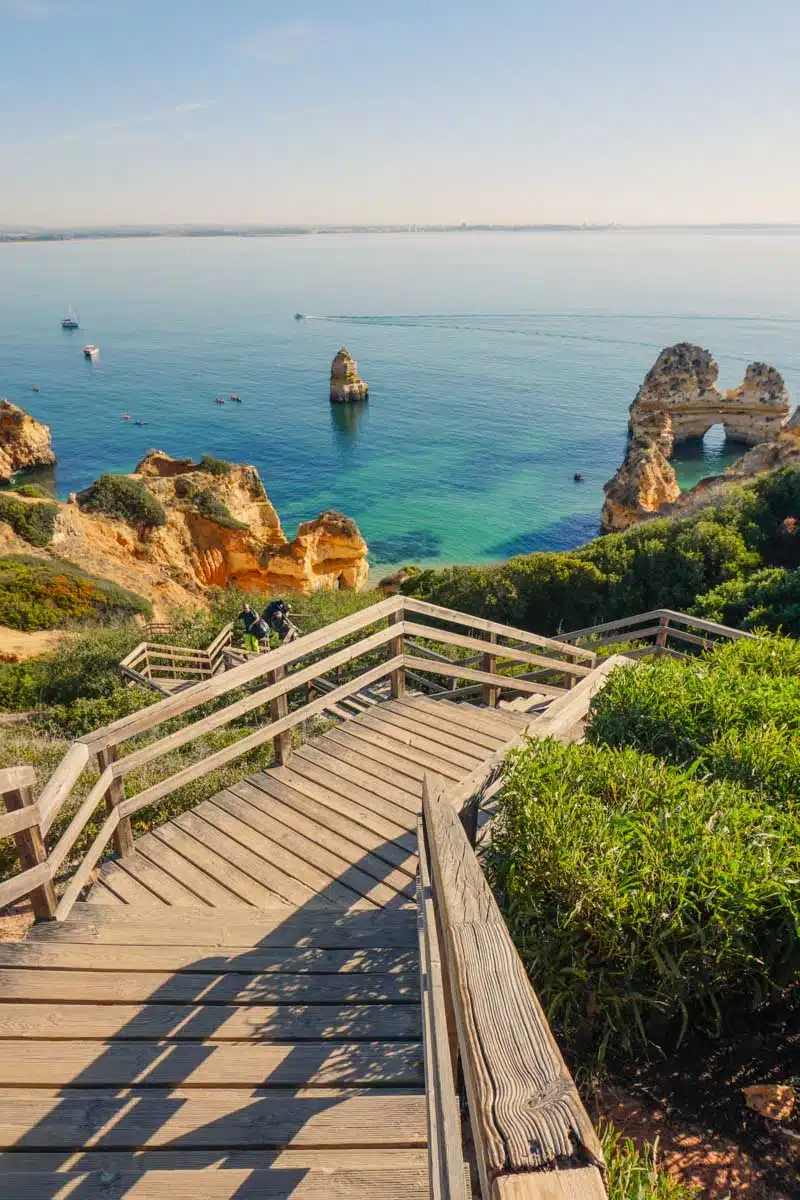
Mainland Portugal has an impressive 586 miles of coastline, so isn’t short of a beach or two. It would be impossible to write a piece about the best things to see in Portugal without including at least one beach.
While the Atlantic coast is good for watersports and long beaches as far as the eye can see, the Algarve is home to calmer waters and some gorgeous places to catch a spot of sunshine.
Praia do Camilo is one such beach – accessed via a wooden staircase, the praia is tucked between the golden yellow cliffs for which the coastline is famed.
Get there early enough, or on a weekday and it can feel like your own private paradise – or grab a spot with the other sun-worshippers and soak up the rays.
Read Next
Hike Along the Fisherman’s Trail in the Alentejo
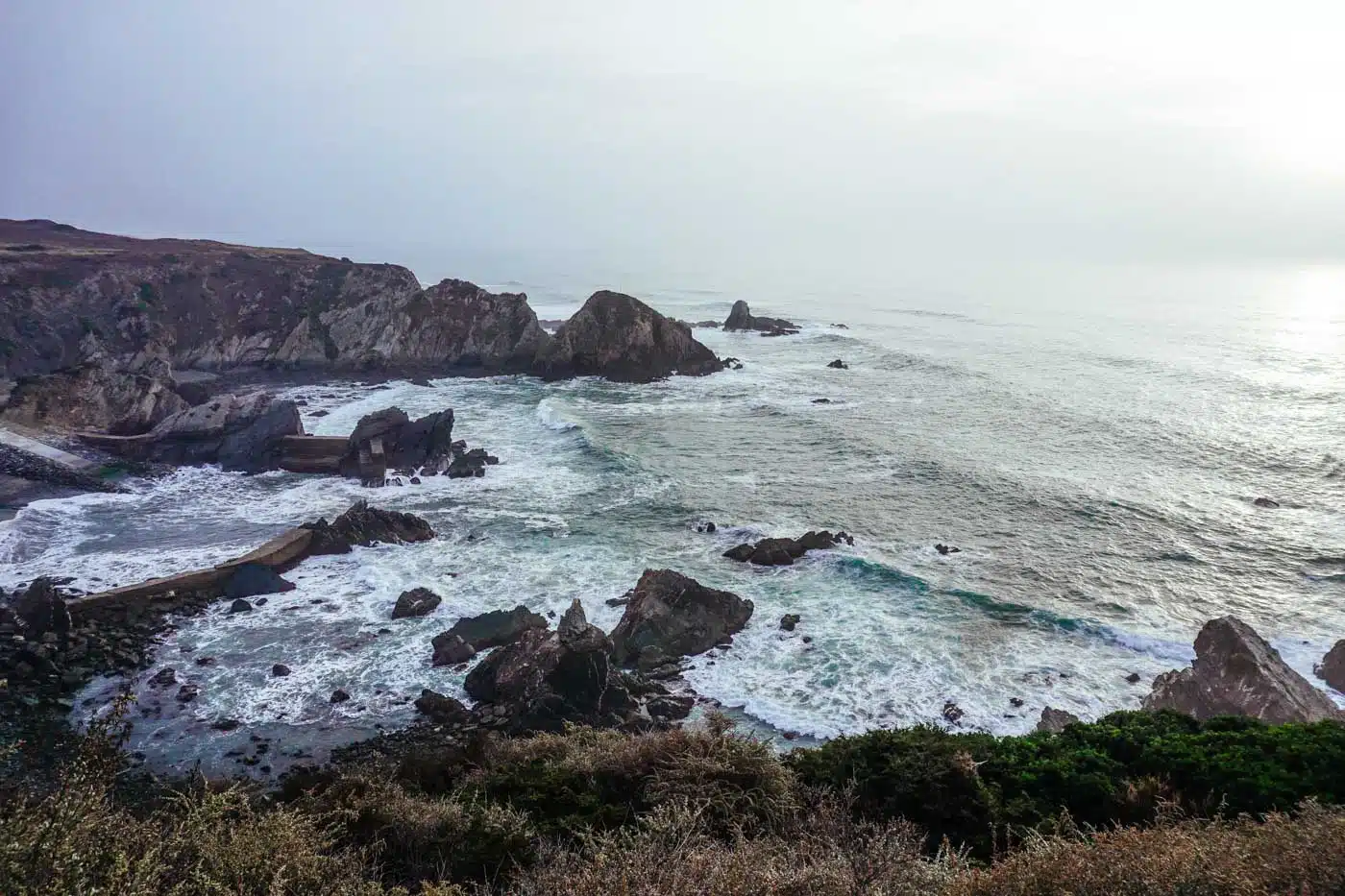
If Portugal’s southern coastline is all about small coves and hidden beaches, the Atlantic coast is a much wilder and more forceful affair.
Sparkling azure waters, fierce riptides and a dramatic coastline await those who choose to hike the Fisherman’s Trail along the Costa Vicentina.
The Alentejo is less well-known than some other regions in the country, meaning that the hike winds through small villages and untouched seashore – dipping into a few stunning coastal towns along its 120 km stretch.
Walk the Historical Way from Santiago do Cacém
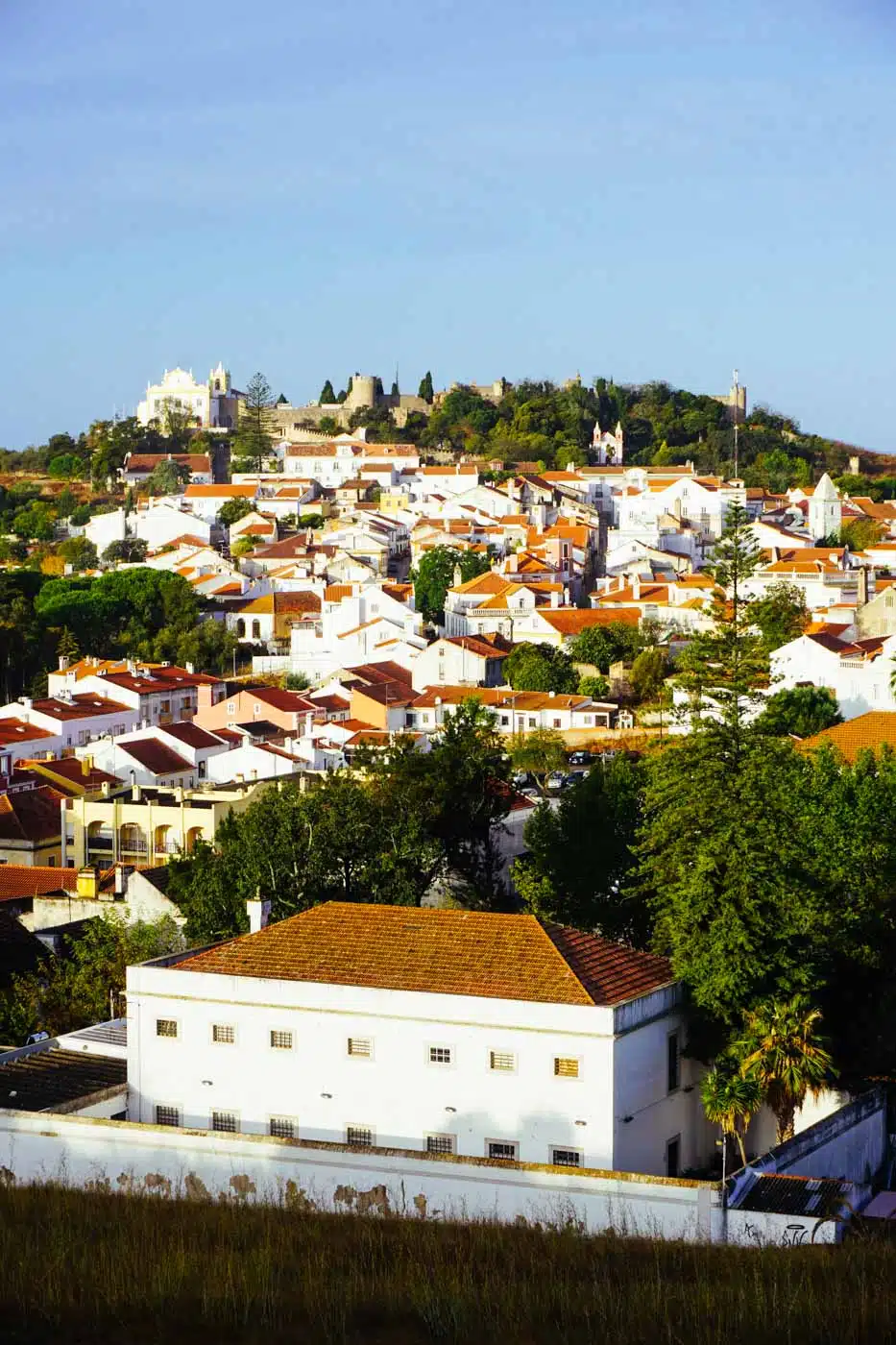
If you’re looking for a completely different hike through Portugal, opt for the Rota Vicentina’s other long-distance route, the Historical Way. It’s the perfect option for seeing a less-explored part of the country.
Starting in the charming town of Santiago de Cacém, the path wends its way down to Cabo de San Vincente on Portugal’s southernmost tip.
As the name suggests, walking the Historical Way takes you back in time. The route passes through rural hamlets, dusty cork groves, scented Eucalyptus forests and mountain valleys as it makes its way south.
Top Tip
The trail’s foundation has also created a range of immersive experiences, where you can learn about the unique history and culture of the region from the locals themselves
Take a Trip to the Ilha Deserta (and splash out on an amazing meal while you’re there)
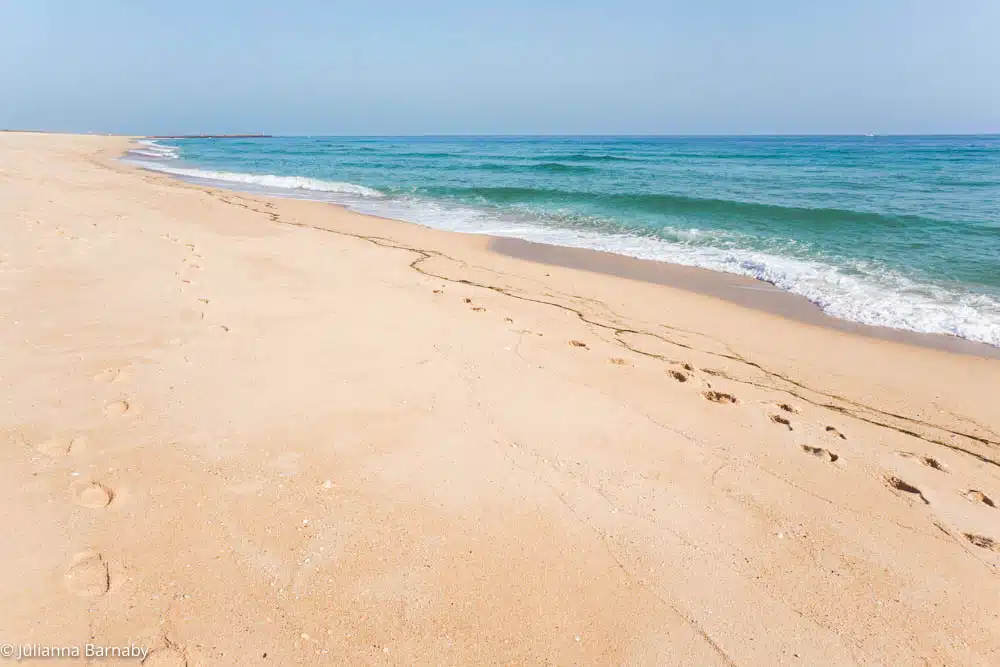
We’ve already established that Portugal has no shortage of beautiful beaches, but a trip to the Ilha Deserta in the Algarve is much more than a flop and drop affair.
So what makes it different?
Firstly, the Ilha Deserta sits in the middle of the Ria Formosa Nature Park – a 60km-long nature haven on the Portuguese coast.
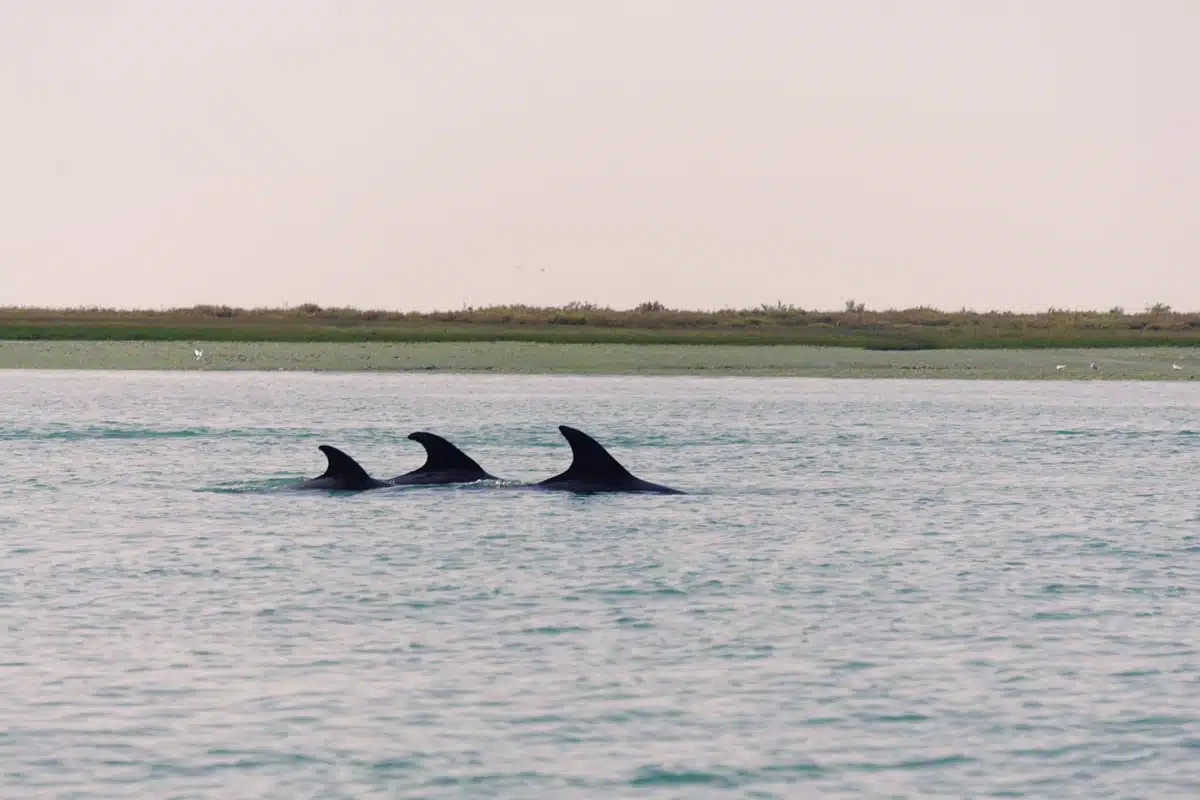
The island can be reached via a short speedboat ride from Faro, but those in the know book onto one of the wildlife boat tours run by local experts Animaris.
Guides point out the bird and wildlife prevalent in the nature park, briefing you on the history and delicate ecosystem of the reserve before dropping you off on the deserted island for a day’s fun.
Once you’ve landed, there are two things to concern yourself on the island (which really is as deserted as the name says): the beach and the restaurant. 13 miles of golden sandy beach to be exact.
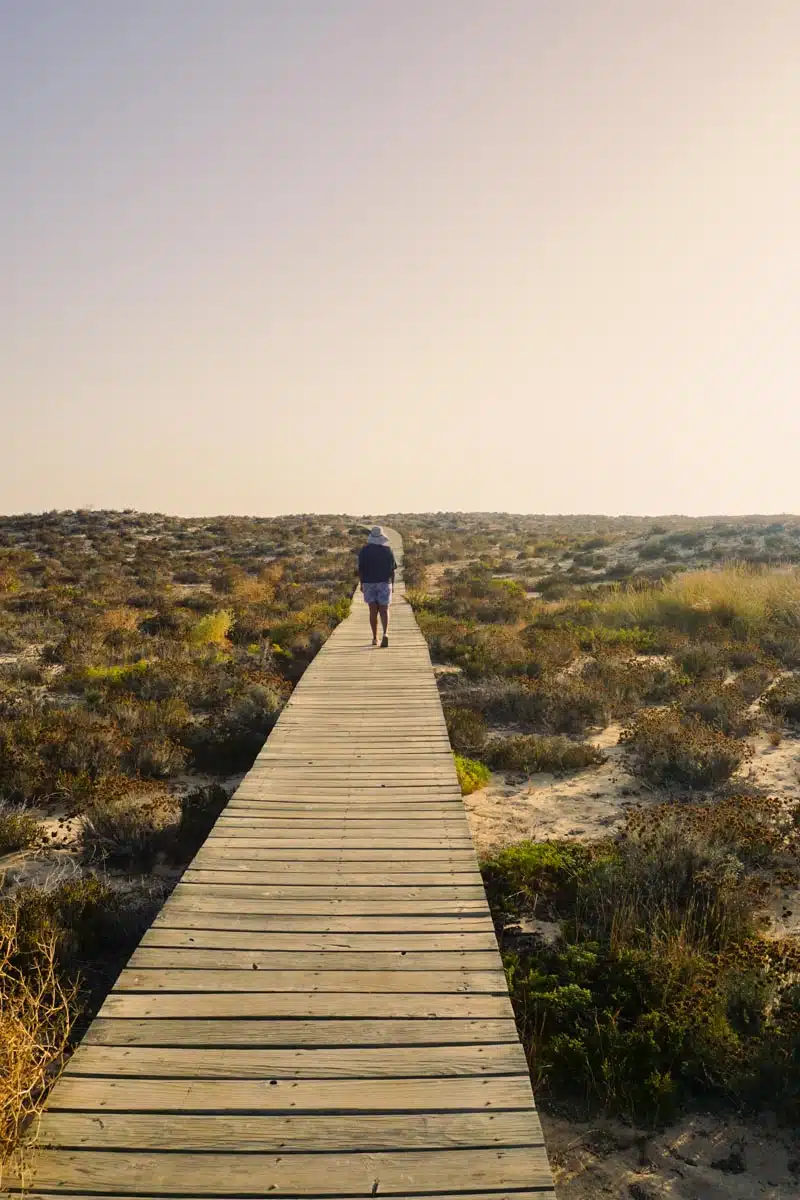
Swim, surf, sunbathe and work up an appetite before going to the island’s largely self-sufficient restaurant, Estamine, which serves up some of the best seafood you can find in the country – no kidding.
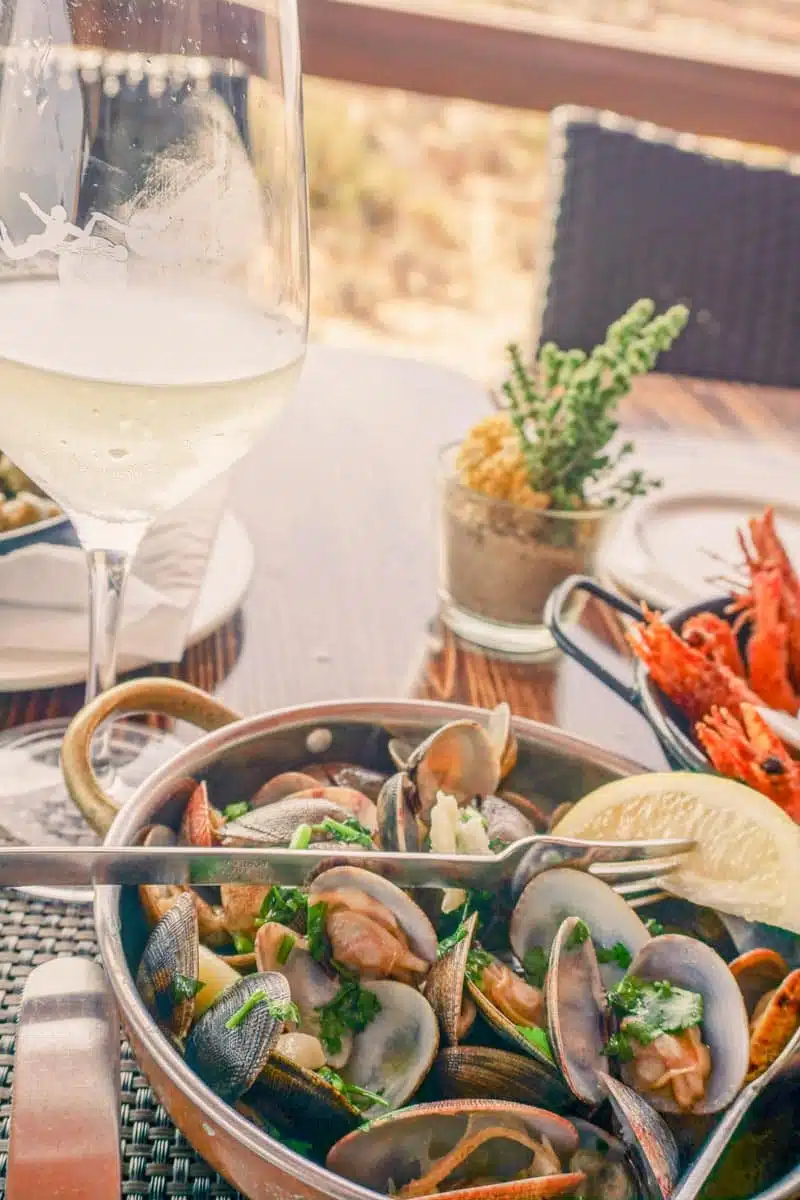
All that’s left for you to do is jump onto the speedboat back to the mainland…
Wander Around the Cobbled Streets of Picture-Perfect Tavira
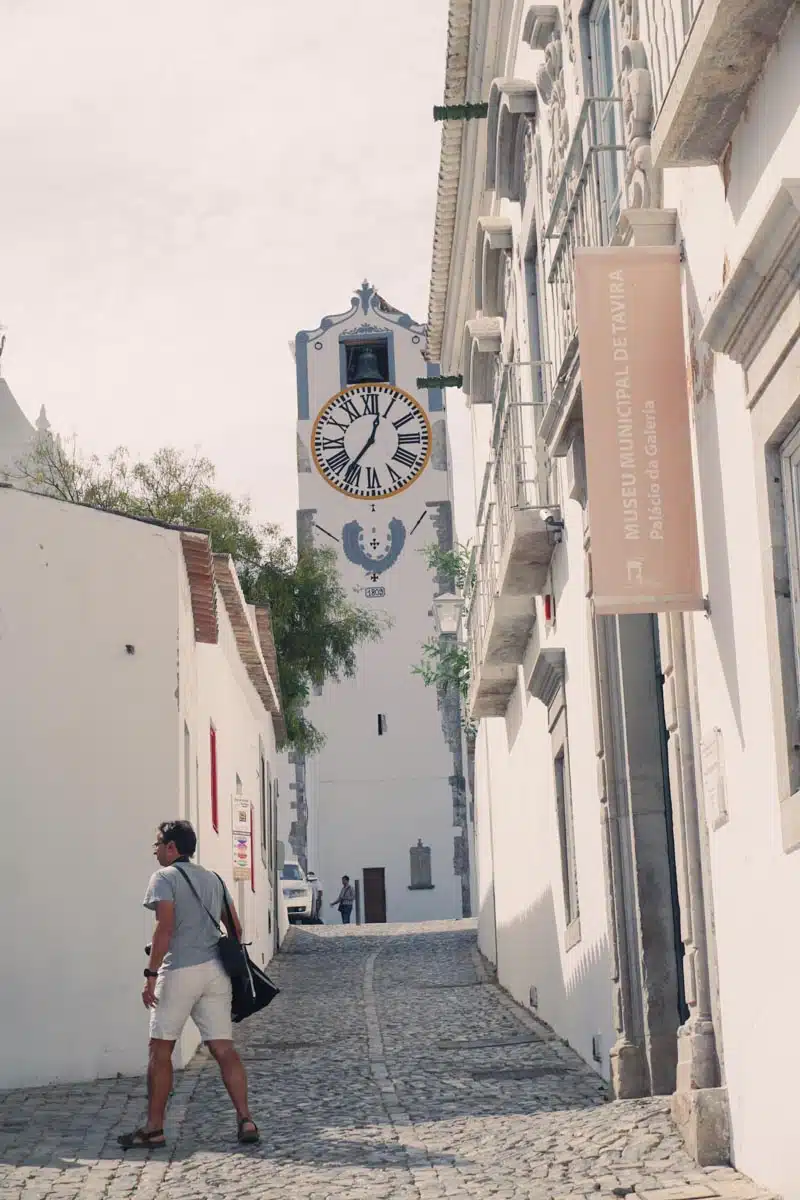
For a low-key visit to somewhere a little different, say hello to Tavira.
Whitewashed buildings, brightly-coloured doors, hidden gardens and a ridiculous number of beautiful churches – it’s almost like someone thought of the quintessential Portuguese town and then made Tavira to suit.
This small town might not have a lot of big-name attractions other than the medieval Castello but so much of its appeal is in walking around the narrow, cobbled streets.
Oh, and stopping off for a coffee here, a pasteis de nata there and soaking up its laid-back atmosphere of course.
See the Anchor Cemetery in Praia do Barril
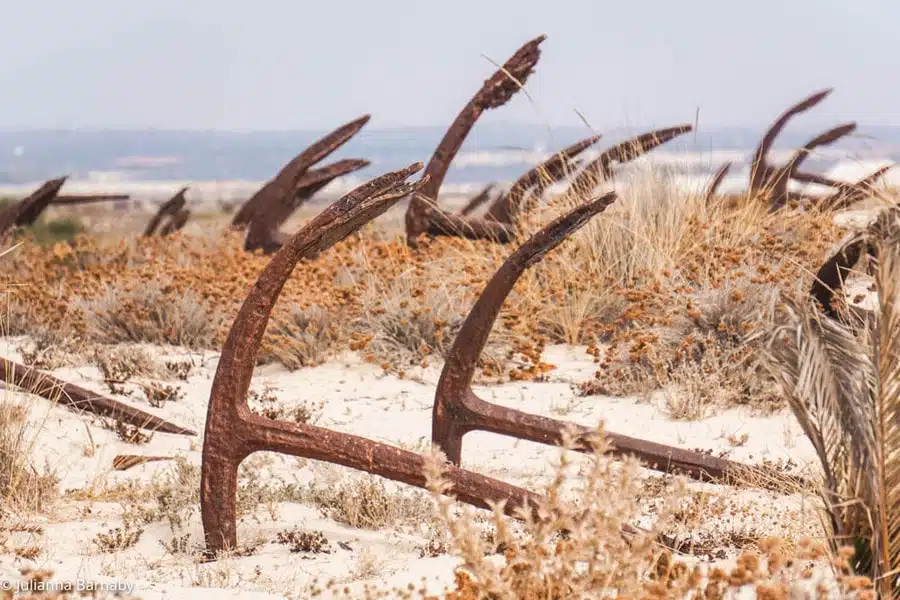
Just around the corner from Tavira, Praia do Barril is best-known for the rather quirky anchor cemetery set back from the main beach.
The cemetery, a collection of large anchors set into the sand, dates back to the time when tuna fishing was one of the biggest industries in the Algarve.
When the stocks declined, the local fishermen left their anchors on the beach and they’re still there decades later.
Sure, it’s one of the more offbeat things to see in Portugal, but very much worth a visit.
Gobble up Pastéis de Nata in Lisbon

Delightfully tasty and unexplainably moreish, the Portuguese custard tart is a display of true culinary genius. Layers of flaky pastry, filled with a nutmeg-scented egg-custard filling – it all sounds so simple.
The fact is, that you haven’t had a pasteis de nata unless you’ve had one in Portugal.
While locals disagree who actually makes the best in the country (the general consensus is Pasteis de Belem, whose long-guarded secret recipe was created by Hieronymite monks in medieval times).
PS. You are totally justified in trying as many as possible in order to make up your own mind on the matter.
Soak Up the Vibes at Vila Nova de Milfontes
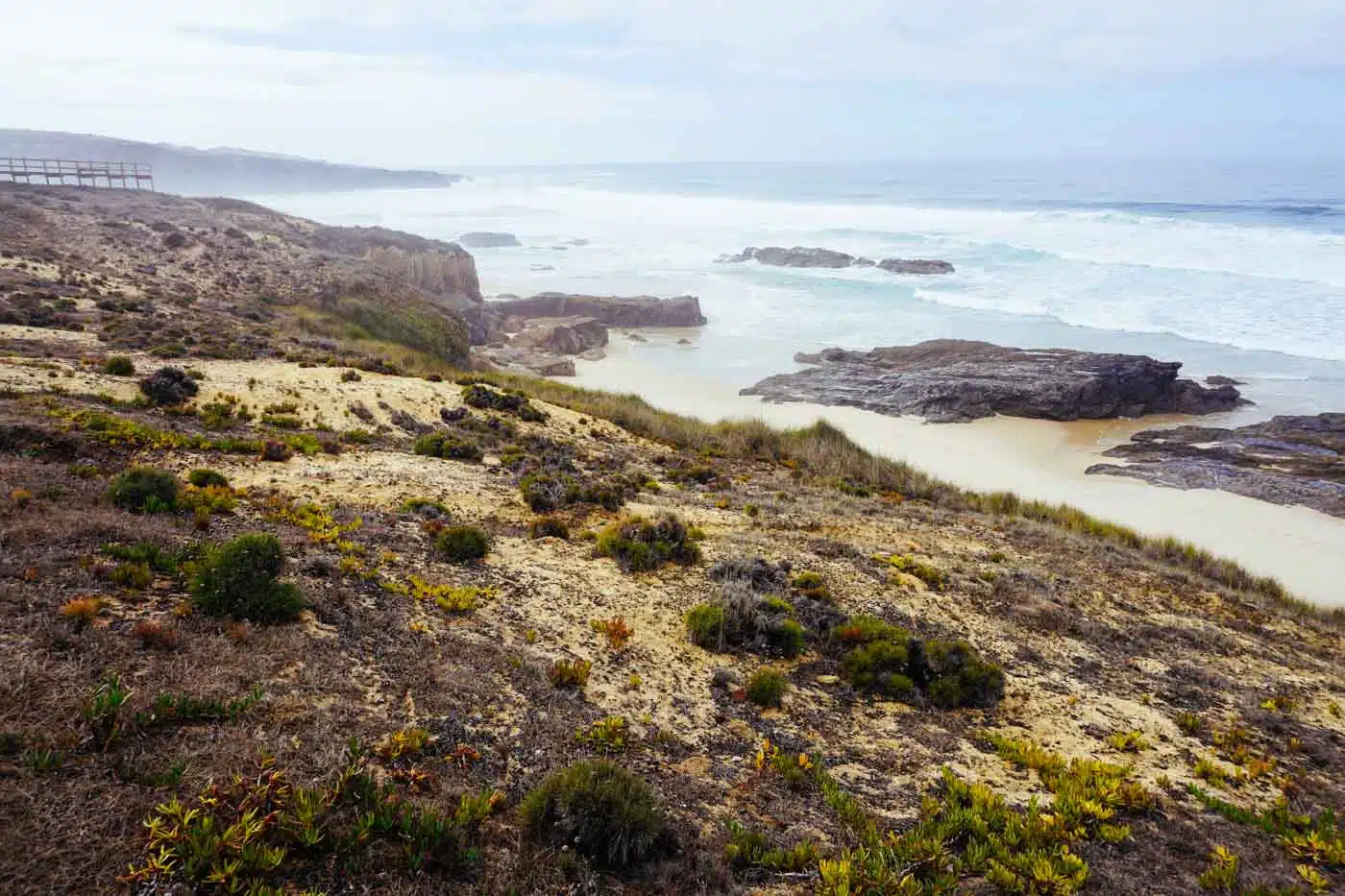
The Alentejo might not be the first thing you think of when you conjure images of a beach escape in Portugal – that tends to be the province of The Algarve.
However, The Alentejo boasts a wealth of gorgeous beaches (if a little more windswept than some on the Algarve thanks to their position facing the Atlantic Ocean) that are just waiting to be discovered.
Case in point? Vila Nova de Milfontes.
The most popular resort in the Alentejo is framed by a thick ribbon of sandy beach running in both directions – walk a little away from the main drag and don’t be surprised if you get a stretch all to yourself.
Away from the sand, the small town brims with traditional Portuguese restaurants, whitewashed houses and the rather curious Forte de São Clemente – built to protect the town from the pirates who roamed the Alentejan coasts in the 16th century.
Take the Thermal Waters at Vidago Palace
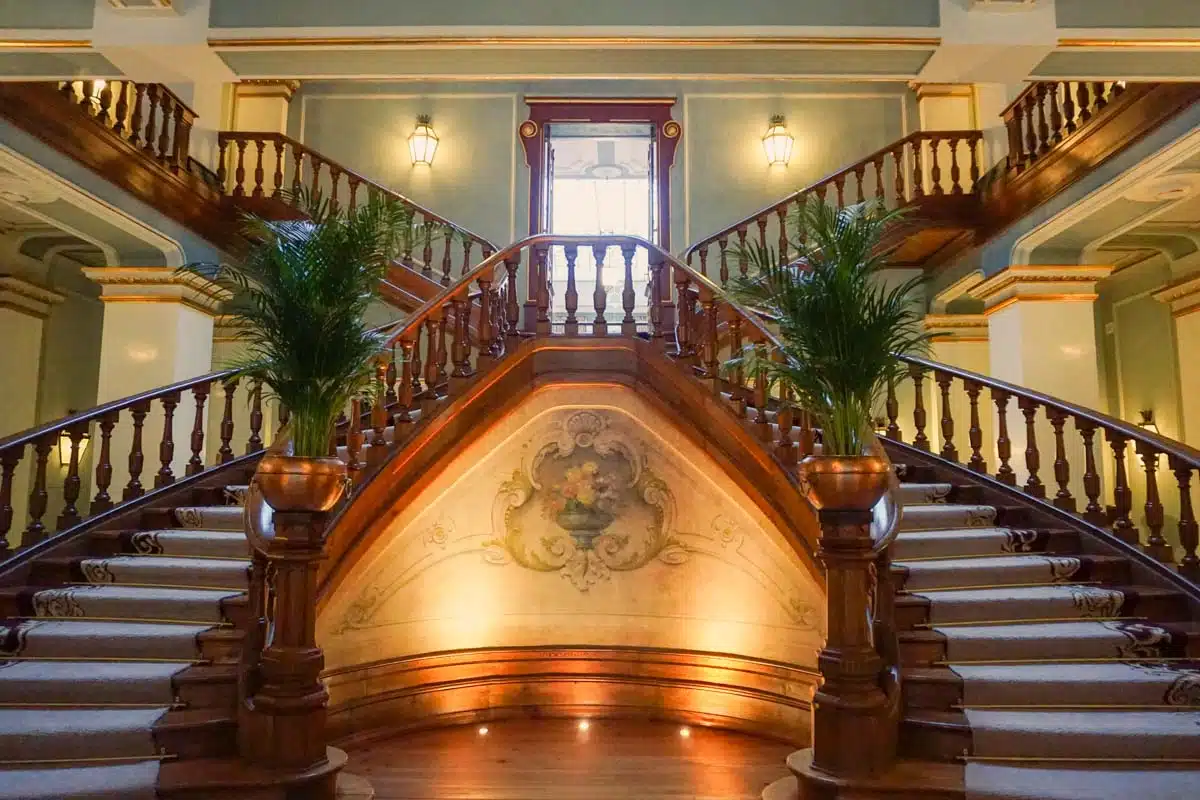
Back in the day, taking the thermal waters at Vidago Palace used to be all the rage. Anyone who was anyone in Portugal would spend some time each year “improving their constitution” with a long stay in the gorgeous belle-epoque style hotel.
Who can blame them? The gorgeous property (less than an hour from Porto) boasts several thermal springs, from which you can take a sip or (in our humble opinion, far more preferable) have a spa treatment in their indulgent spa.
Venture to Madeira
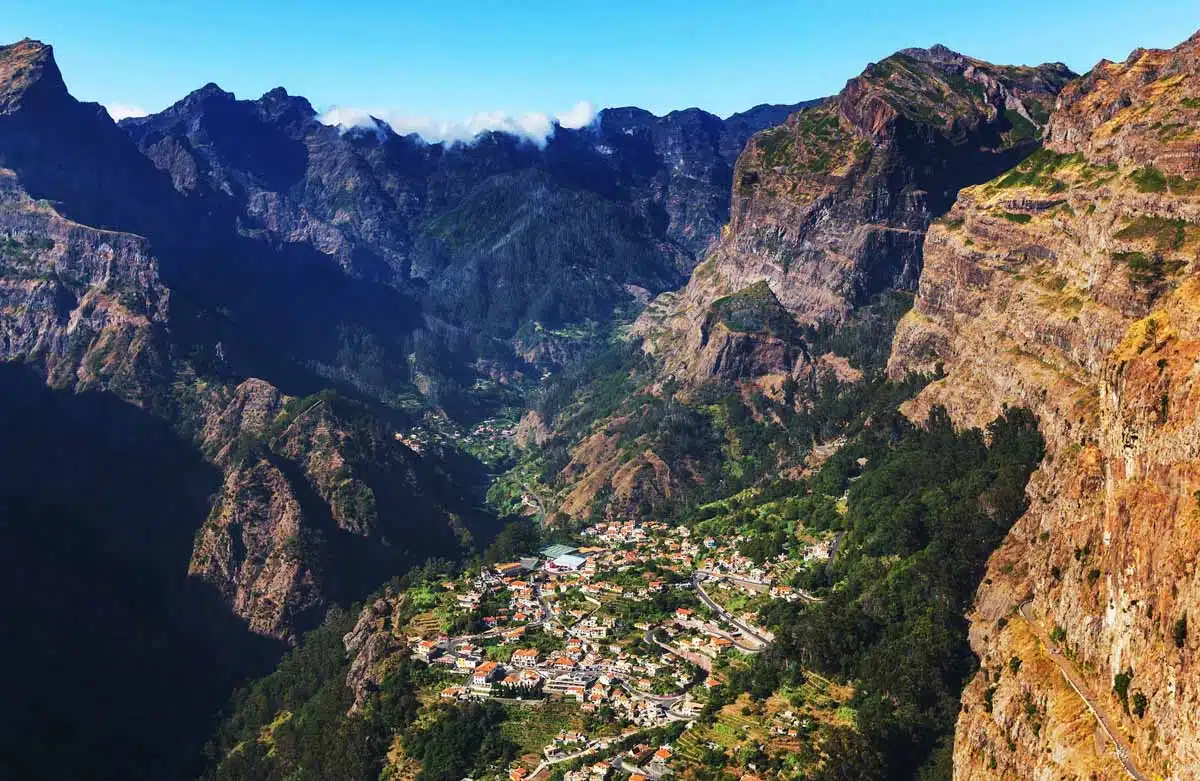
Madeira is more than just the namesake for a tasty, tawny tipple and a brightly-coloured cake – this cluster of volcanic islands in the Atlantic ocean will blow you away with its spectacular scenery and memorable (if difficult) hikes.
The capital, Funchal is a quiet haven of charming architecture and friendly locals.
Elsewhere on the island you can hike the steep, volcanic terrain, take a dip in the natural seawater swimming pools, go paragliding and parasailing and go dolphin and whale watching.
Don’t miss Sao Vincente off your list either – this hidden gem is one of Madeira’s most beguiling spots.
Not bad for an island that’s only 800km squared.
Strike Out to The Azores
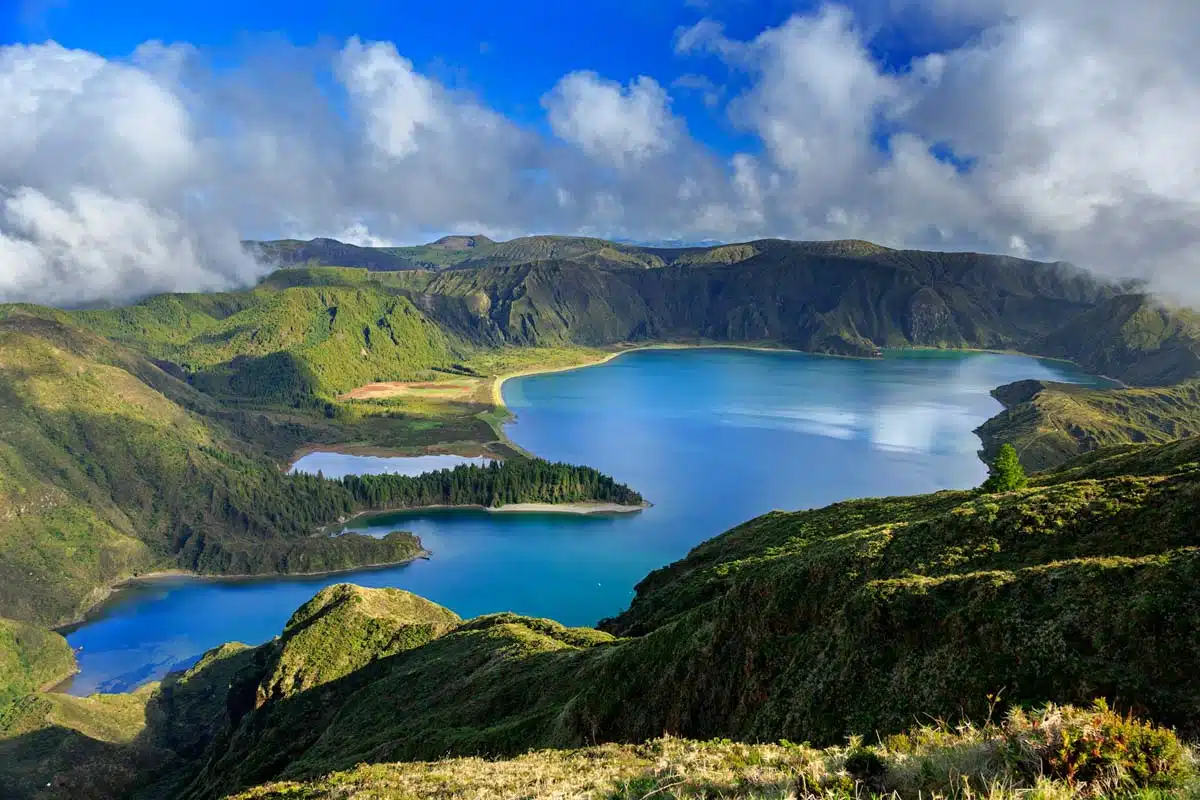
The Azores, an archipelago of nine main islands set in the mid-Atlantic, is Portugal’s answer to the Lost World.
Big on sustainability and preserving their natural environment, Azoreans are proud of the otherworldly setting that they call their home. Not surprising when you have a chance to explore the densely vegetated islands – dotted with all kinds of natural wonders – for yourself.
Climb Portugal’s highest peak, Pico for stellar views of the islands and hurl yourself into the seemingly endless number of outdoor activities on offer. When you’re all worn out, chill in towns seemingly lost in time, and dial onto the relaxed pace of life typical of the islands.
See the Street Art and Party at LX Factory, Lisbon

Lisbon is a city of stark contrasts – centuries of history rub comfortably alongside the city’s reputation as one of the most exciting and dynamic cities in Europe.
Of all of Lisbon’s contemporary hotspots, LX Factory is the jewel in the crown: a welcoming mishmash of cool street art, weekend markets, independent restaurants, bars, boutiques and parties that guarantees to entertain you pretty much any time and any day of the week.
Discover the Beauty of Historical Aveiro
Crisscrossed by canals, it’s not hard to see where Aveiro’s nickname “The Venice of Portugal ” comes from – and most visitors hop onto one of the colourful barcos moliceros that ply the waterways.
That said, Aveiro’s charm goes far beyond just water. A wealth of Art Nouveau architecture and pastel-hued houses complete the picture.
Strike out by boat across the lagoon and you’ll find the beautiful nature reserve of Sāo Jacinto – complete with wooden walkways picking their way through the long grass.
How to Discover: Molicero Boat Tour
Wind Your Way through Porto’s Historic Streets
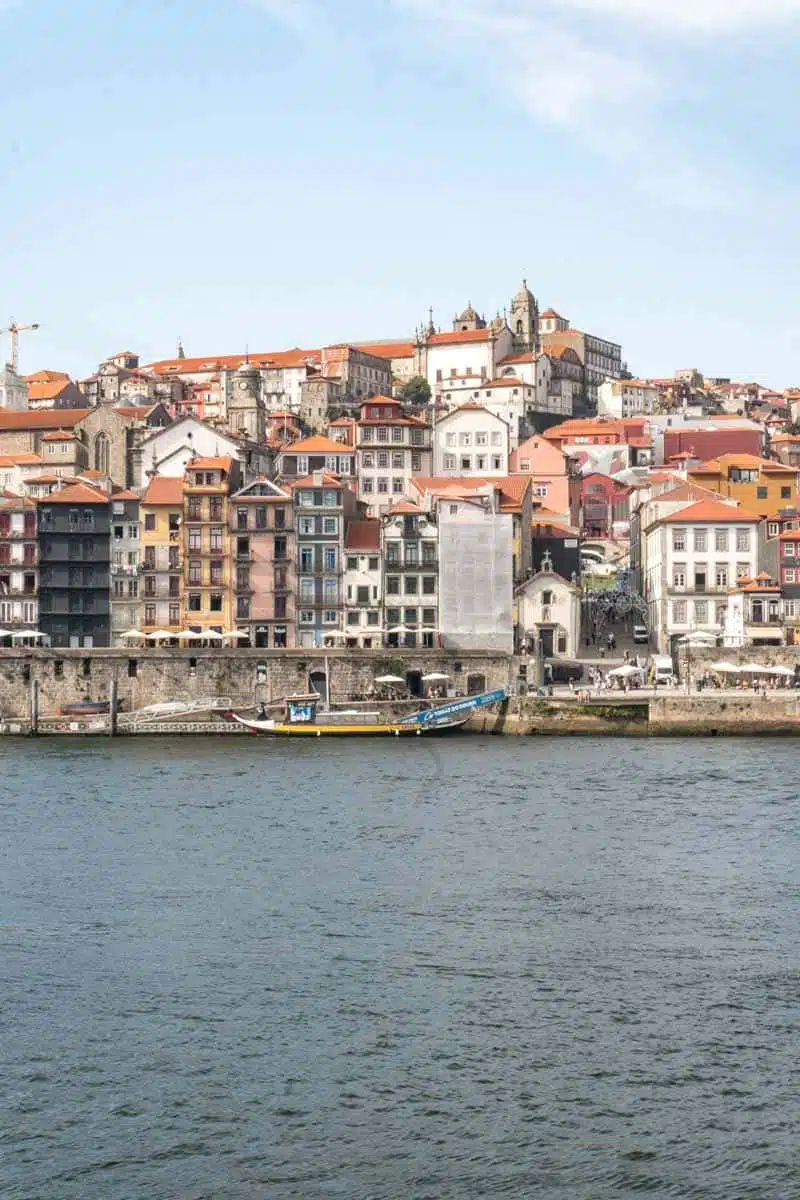
There’s a friendly rivalry between Lisbon and Porto for the title of the country’s most-loved city. With its UNESCO World Heritage city centre and cavernous Port houses, there’s a good argument for Porto to win the title.
Spend at least a few days taking in the city’s highlights: the Cathedral Se, Museu de Arte Contemporânea, Casa da Música and Jardim do Morro to name a few.
The city is also riding the wave of contemporary Portuguese cuisine, with some of the country’s most famous (and whizzy) chefs calling it their home.
Read Next
Listen to Fado in Alfama, Lisbon
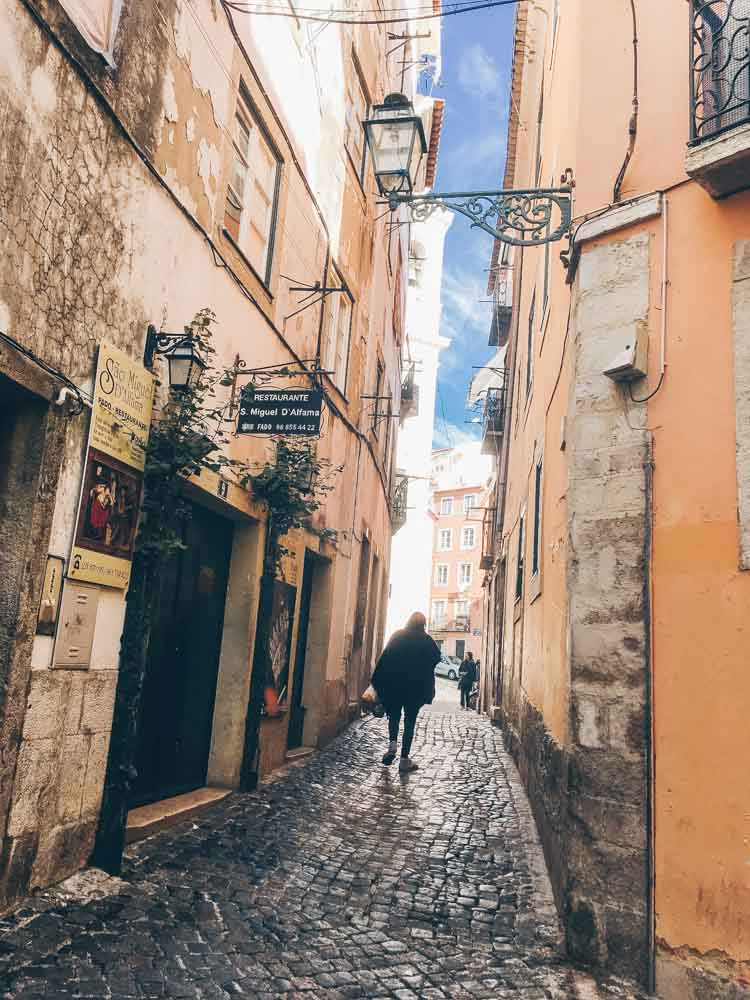
Listening to the sorrowful, bittersweet tunes typical of Fado, Portugal’s long-loved music genre is one of the experiences you shouldn’t miss when visiting the country.
Where better to go and listen to some Fado than in Lisbon’s Alfama neighbourhood, from which it hails?
Sip on a Ginjinha (a Portuguese liqueur made using ginja berries steeped in alcohol) and soak up the melancholy sounds in a traditional Fado restaurant.
Sr. Fado de Alfama and Clube de Fado are two of the best spots.
Go on an Indulgent Weekend in the Algarve
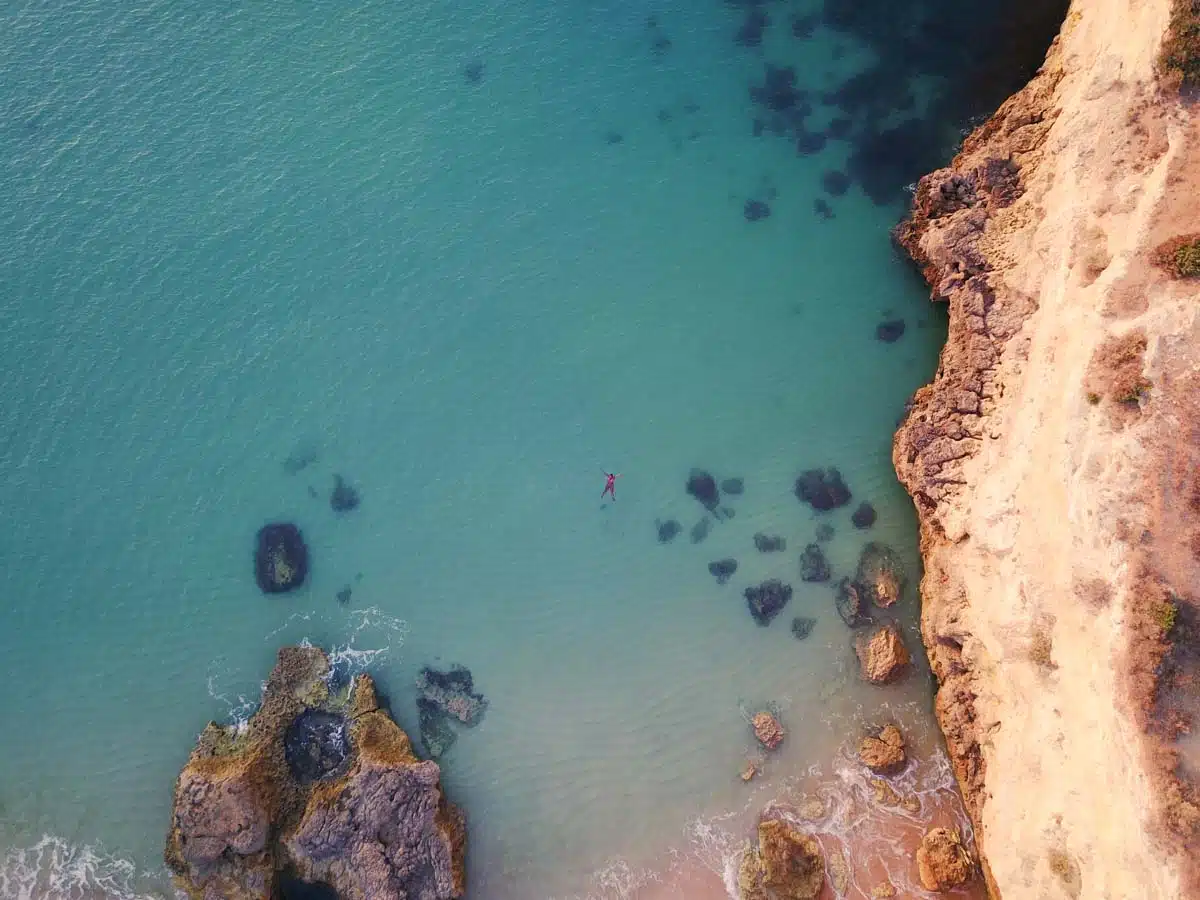
If you’re looking for a laid-back luxury getaway with plenty of spa and sunshine, the Algarve is the place to be.
There’s no shortage of high-end hideaways for you to escape to, but The Anantara Vilamoura is a real gem.
This new hotel in plush Vilamoura is the perfect destination for a weekend escape – complete with an outstanding spa and an adults-only pool, surrounded by Veuve Clicquot cabanas for the ultimate treat.
Visit Tomar, The Home of the Knights Templar
Close enough to Lisbon that you could easily do it on a day trip, the compact town of Tomar is a pretty escape from the city. Stroll around the cobbled streets to discover its traditional Portuguese charm.
Most visitors come here with a purpose – to check out the Convento do Cristo – sitting high above the town and best-known as the base of the Order of the Knights Templar, who sought to defend Portugal from the Moors.
The Unesco World Heritage site straddles the line between religious haven and military base – but also functioned as a palace in its history, which dates all the way back to 1160. Allow at least half a day to explore.
Past Meets Present in Braga
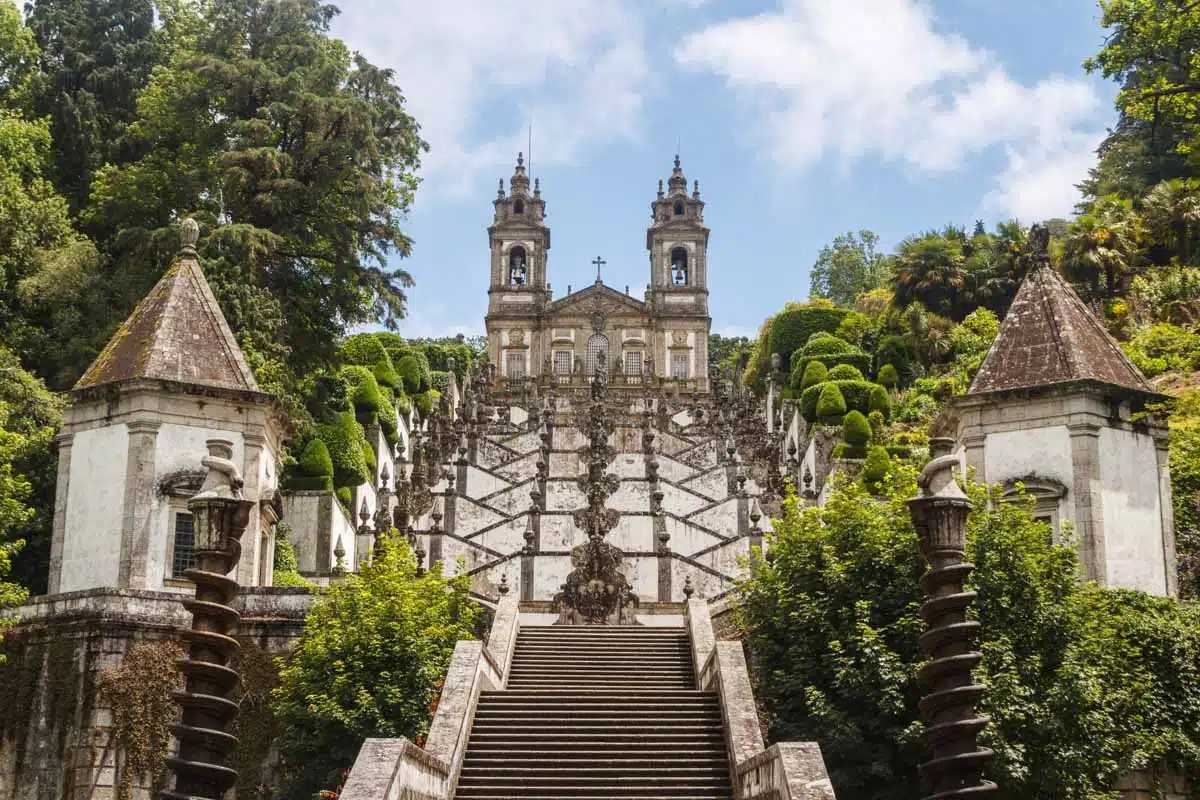
Braga, one of Portugal’s oldest cities, sits in the northeast of the country, luring visitors in with the promise of remarkable architecture, delicious food and old-world charm.
Although it’s a small city, Braga boasts over thirty churches and Portugal’s oldest cathedral – a testament to its longstanding religious importance.
You could be forgiven for thinking it will be sleepy and staid – it’s not. Underground bars and clubs, small cafes and contemporary restaurants keep the city firmly in the present.
Visit Monsanto – The Most Portuguese Town in Portugal
Monsanto won the quaint title of being the “most Portuguese town in Portugal” in 1938, reason enough to pique your curiosity.
What does that even mean?
Well, in Monsanto’s case, a village that has barely changed for hundreds of years, a living museum of days gone by.
The town’s architects weren’t remotely fazed by the huge granite boulders occupying the space in which they wanted to build – they simply built around them.
The result? An unusual design where the boulders form part of the walls, roofs and floors or many of the village’s buildings.
Setting aside its charisma, Monsanto should go straight to the top of your list of must-visit spots in Portugal for the picture opportunities alone.
Hiking in the Parque Nacional da Peneda-Gerês
Butting up against the Spanish border, the Parque Nacional da Peneda-Gerês is Portugal’s only national park – which would be reason enough to visit.
Add to that 700 square kilometres of verdant valleys, wooded hills and tiny stone-built villages to see why it’s a hiker’s delight. This is Portugal at its wildest – go for some of the country’s best hikes and no crowds.
Step back in Time at the Historic Village of Sortelha
The small village of Sortelha is one of the most historically striking places in Portugal, almost untouched since the Middle Ages. Renowned for its Hispano-Arabic founding, it was once a Moorish stronghold until the 12th century when they were driven out.
The centrepiece of the village is the huge castle that towers over the village that nestles upon a hill top, and this is an absolute must-visit if you have any interest in history.
Inside the 13th-century castle walls, built by King Sancho I to guard against attack from Spain, you can still find picture-perfect granite-built dwellings with stonework marked with Arabic script and patterns.
Other joyous sights to see in the gorgeously preserved villages, apart from the orange-roofed houses outside the castle walls, are the 16th-century pillbox and the old parish church that has some incredible ornate features.
Top Tip
There’s a lot of walking to be done on uneven ground here, so make sure you’ve got your comfy shoes on!
Explore the Stunning Fishing Town of Cascais
Only a short way down the coast from Lisbon, Cascais is one of Portugal’s finest fishing towns, and one of its most beautiful.
Another small town where you can wind down away from the tourist crowds, and is the perfect spot for you to enjoy the freshest, finest seafood. I recommend Lota de Esquina near the historic town centre, owned by the famous chef Vitor Sobral. If you can’t get in here – it does fill up despite its cavernous size – you can’t really go wrong at any of the other lovely fish restaurants.
Historically the summer retreat for Portuguese nobility, the town now combines gorgeous cobbled streets surrounded by imposing, lavish villas, a proper old-school fort, museums, and a quality nightlife once the sun goes down.
In addition, there’s plenty of awesome sandy beaches where you can kick back for an hour or two, perhaps to let your fabulous lunch settle.
Ride Lisbon’s Famous Tram 28
There are fewer better ways to be introduced to the wonderful city of Lisbon than by travelling on Tram 28. Think of a hop-on-hop-off bus tour, only on a tram, where your only guide is yourself (and any guidebook you might have with you).
Electric trams first entered service in Lisbon in 1901 and I think they remain the best way to navigate Lisbon’s seven hills without getting endless blisters on your feet.
Tram 28 takes in many of Lisbon’s great sights and views, taking in Lisbon Cathedral, Sao Jorge Castle, Arco da Rua Augusta, the National Pantheon, the Thieves Market – and that’s merely scratching the surface.
The tram carriages themselves are vintage Remodelado carriages dating back to the 1930s, which makes them worth travelling alone. Settle in on the wooden benches and let yourself enjoy the city as it was meant to be enjoyed.
Visit Sagres, Jewel of the Algarve
Sagres is a small town on the southwestern tip of Portugal where the Mediterranean sea and Atlantic Ocean meet and shake hands.
While many tourists flock to the better-known beaches along Portugal’s southern coastline, the slightly ramshackle, shabby-chic town of Sagres is becoming a popular spot for tourists looking for something a little different from their Portuguese trip.
There’s still plenty of opportunity to relax on some gorgeous golden beaches, just rather quieter than further along the coast, and if you’re into surfing, the Atlantic waves will be perfect.
Visit the Cape of Saint Vincent, which people once believed was the end of the world, a rocky outcrop jutting into the Atlantic and topped by the gorgeous lighthouse. Also make time to check out the 15th century fortress where the views are arguably even better than at the lighthouse.
For food, you can’t visit Sagres and not have some of their amazing seafood and A Tasca is the perfect spot with its Atlantic-side outdoor terrace.
Cool things to do in Portugal: Map
Love This? Save and Share on Pinterest
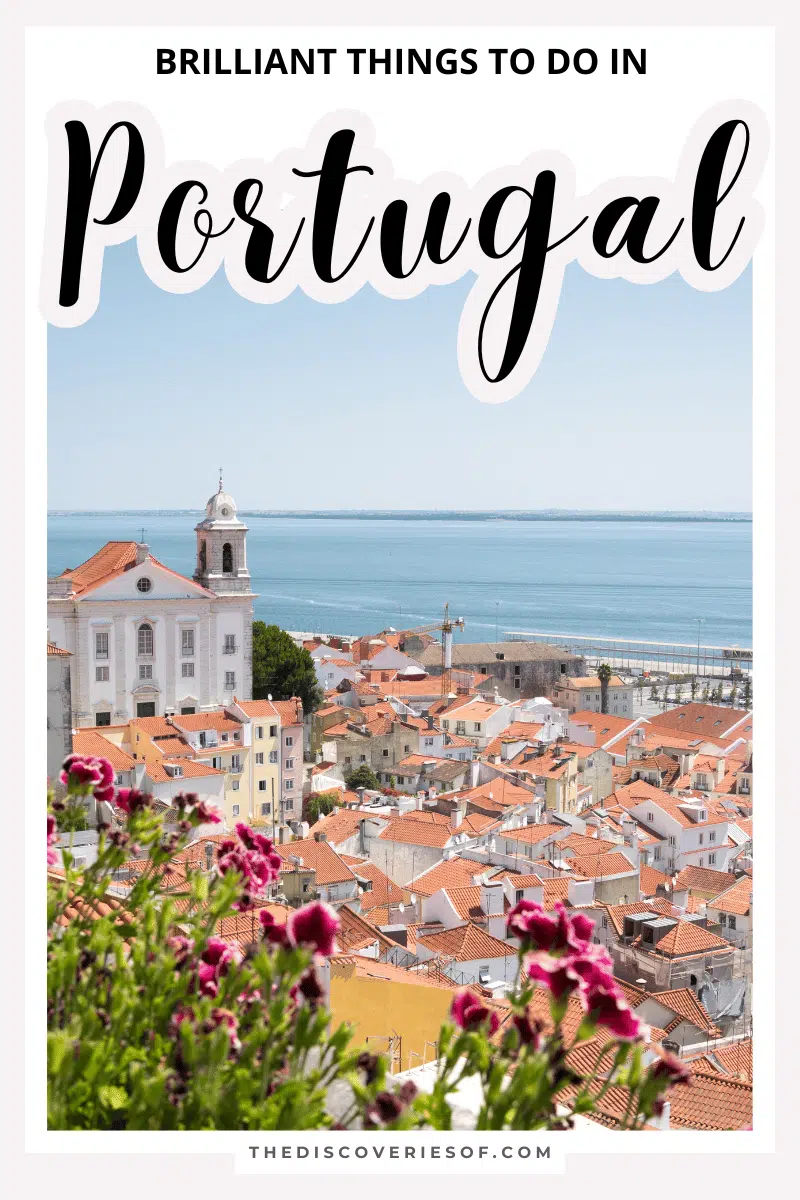
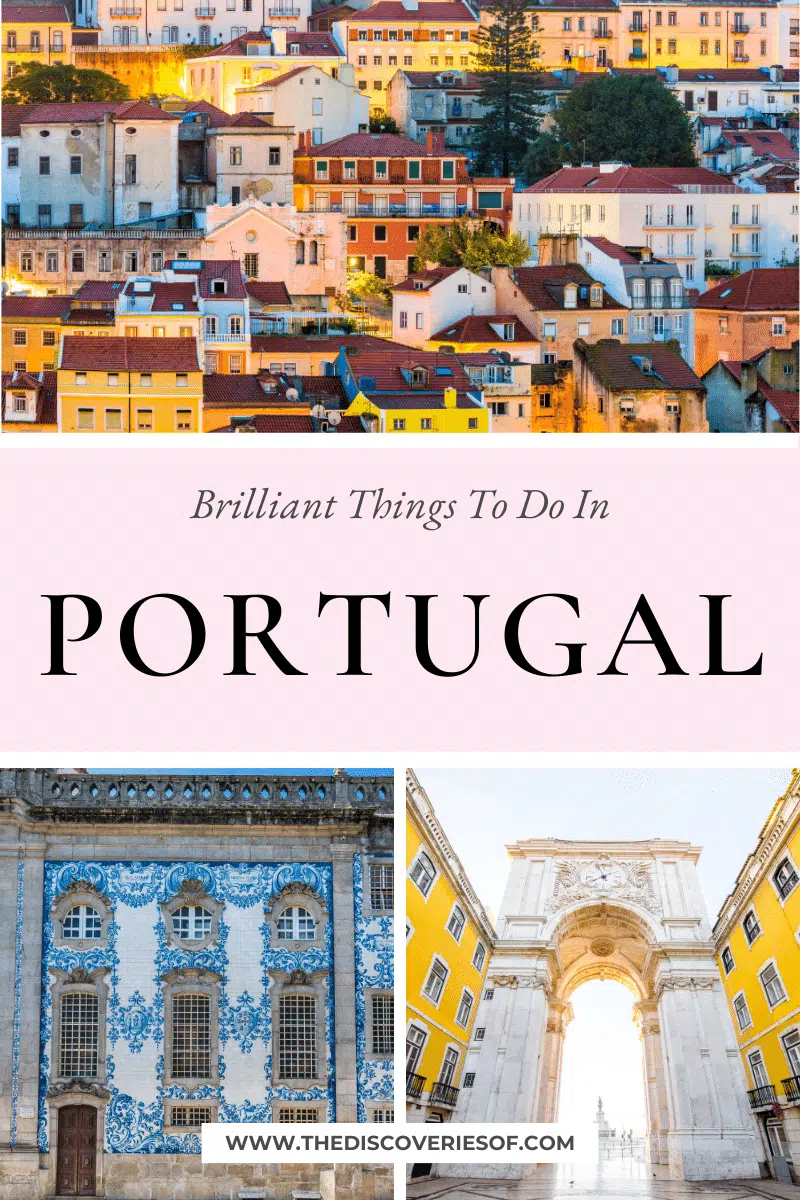

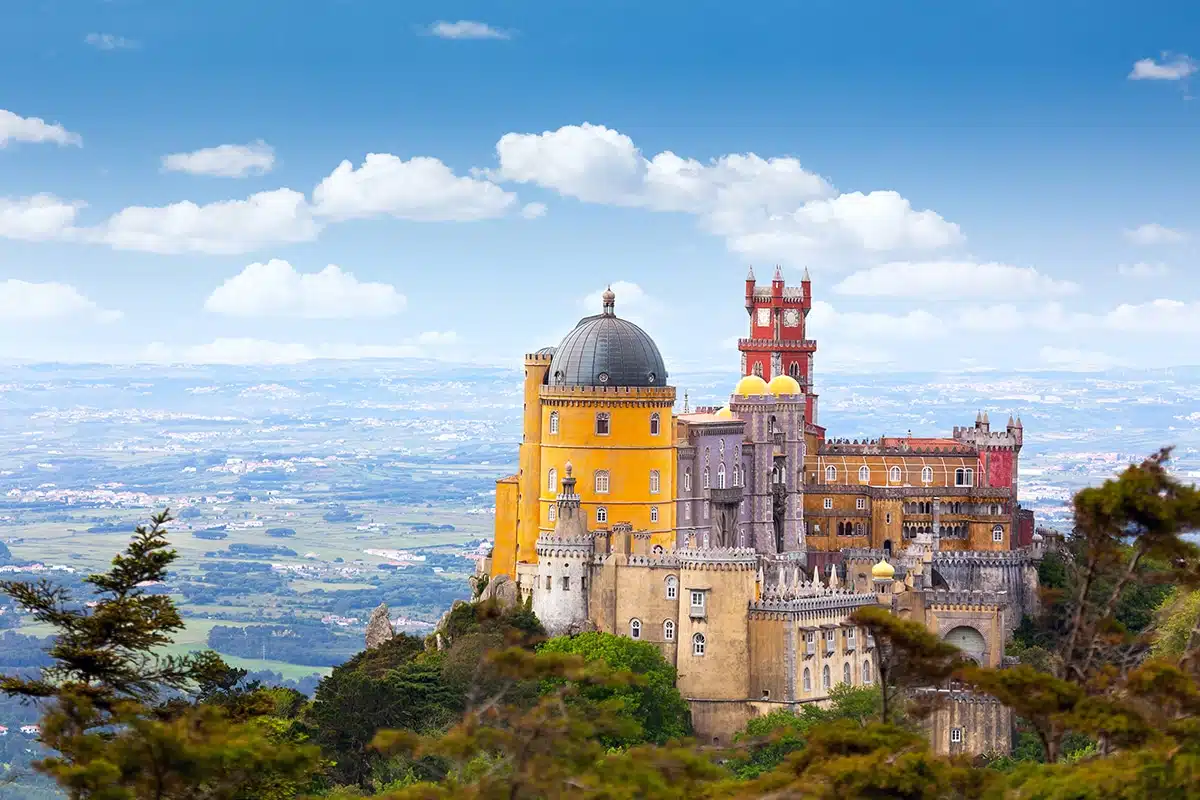

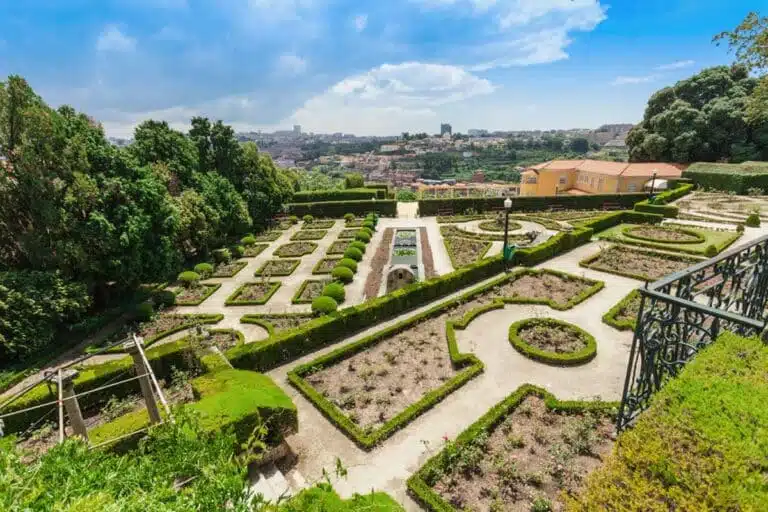
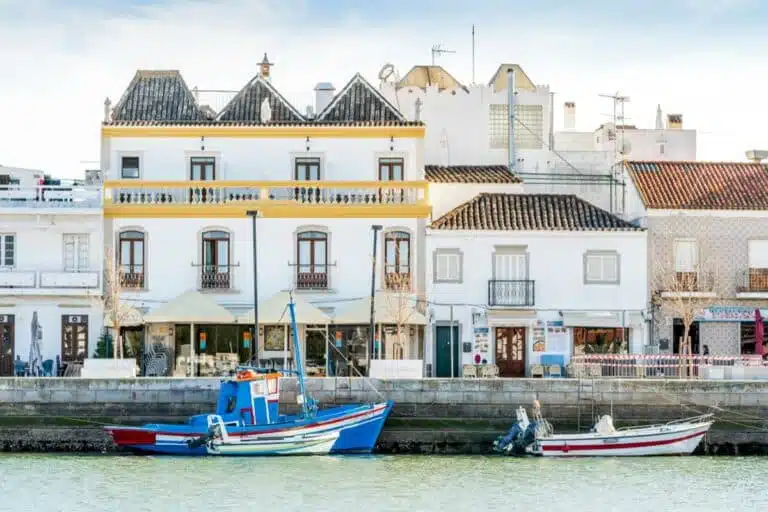
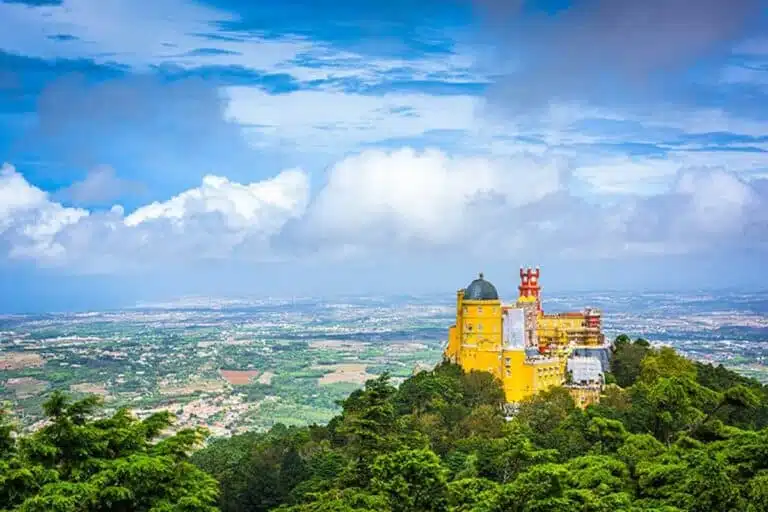

I also suggest Obidos, a medieval town surrounded by a wall
Thanks for the suggestion Iris – I haven’t been but have always wanted to. Definitely one for the next trip!